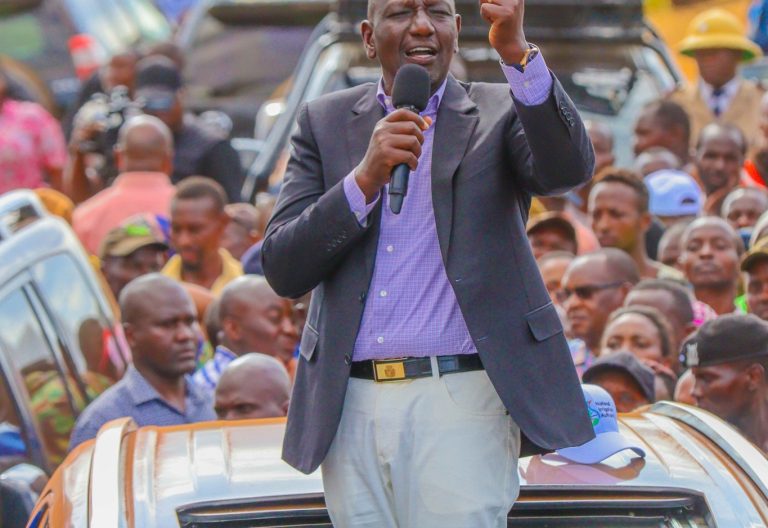Harsh truth behind Ruto’s Mt Kenya performance

Though deep down the regime and Mt Kenya region MPs have had a feel of the slippery mountain, and the ones who are going home have seen firsthand their fate, we can also say President William Ruto’s visit the region has been a win-win to a large extent. The president probably knows who among his lieutenants is popular and worth having on his side as a political asset.
Nevertheless, the President and his delivery team must be happy for now. They’ve got enough footage to show the world that this regime is still popular. The regime’s social media warriors have been quick to make viral footage of supportive crowds while trying to mute any form of dissenting chants. On the other hand, the people of Mt Kenya are smiling because money was poured in, the local economy boosted and a few jobless young men got some pocket change.
Local politicians are not left behind. Mobilisation is the currency of Kenyan politics and it is clear they have made millions or at least hundreds of thousands, going by the rallies we saw and the emergent conversations. One friend of mine from the other side says that Kenyan voters love generous politicians. They’ll show up big time courtesy of mobilisation, and MPs and local leaders love it when a President visits their backyards because mobilisation money is sweet.
From a distance, the optics have been impressive: packed venues, jubilant crowds, and viral footage showcasing what appears to be overwhelming support for the current regime. The narrative being quietly pushed is one of popularity and political strength and social media warriors are also making a killing trying to sell the mountain tour as a success. But beneath the razzmatazz these guys have real numbers and they know such is the fleeting deception of the mammoth crowds.
Beneath this spectacle lies a more uncomfortable truth: our country is grappling with deep socio-economic despair, and what we are witnessing is not organic political enthusiasm, it is survival. The reality is that thousands of jobless, disillusioned young men and women are showing up not out of conviction, but because political rallies have become one of the few places where cash changes hands. In a society where unemployment remains high and opportunities are scarce, attending rallies has become an informal means of livelihood.
We live in a society where young boys have resorted to violent robbery, where the security apparatus responds with brutal extrajudicial killings, where abductions of young Kenyans with divergent voices is rife and where leaders from both the political and religious spheres have perfected the art of handouts. Yet we continue to blame these young people without interrogating the systemic decay that has forced them to view violence, crime, or political mobilisation as the only way out of poverty.
Politicians have exploited this vulnerability. Mobilisation is now the most reliable currency in Kenyan politics. The allure of rally money, transport allowances, and a free meal has created a dangerous loop where the masses are constantly herded for political theatre, not civic engagement. Local economies temporarily flourish, and MPs boast about “successful” visits when, in fact, the crowds are not an endorsement but a symptom of economic desperation.
What’s even more troubling is the attempt to conflate these large rally turnouts with political support. This is a fallacy we must reject. As we inch closer to the 2027 elections, let it be clear that the presence of people at political rallies during weekdays, especially in economically depressed regions, is not a barometer of public support. It is a reflection of systemic failure, and our votes should be used to address these systemic failures.
Kenyan voters are far more discerning than they are given credit for. They may attend a rally today for transport fare and lunch, but that does not mean they will vote the same way in 2027. The true sentiments of the electorate are forged in the quiet spaces of suffering, reflection, and lived reality, not in choreographed rallies designed for viral footage.
— The writer is a media studies Researcher











